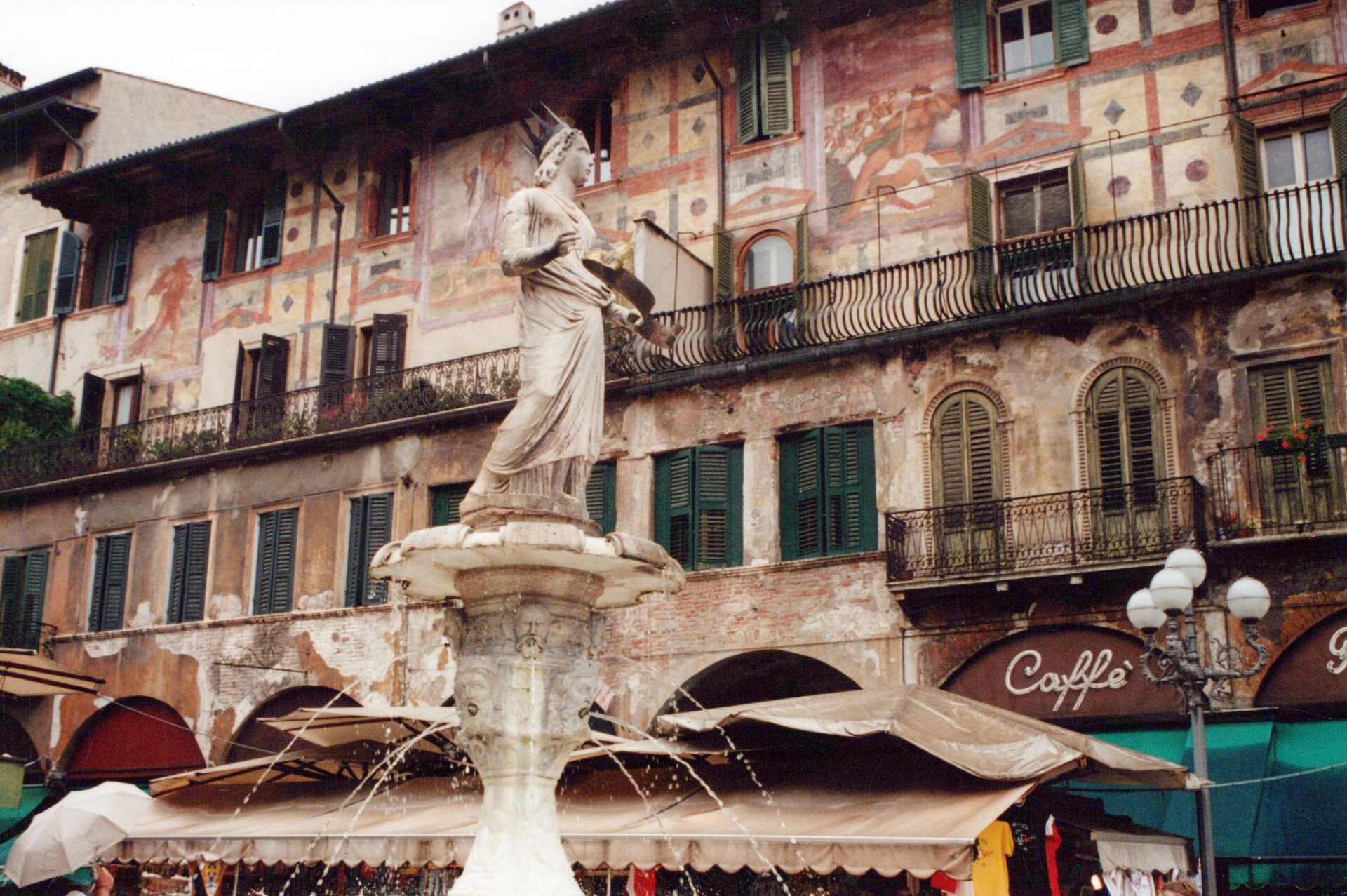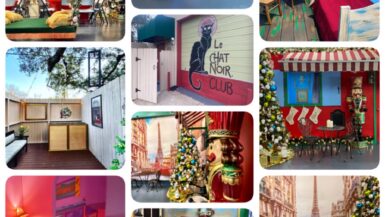You can’t go wrong with Italy. It is one of the most exciting destinations in the world. The Italians exude so much history, style, art and great food, they even make the French jealous..If you’ve been once, you’ve no doubt crossed the Venice, Rome and Florence triangle off your list. Repeat visitors usually knock out the Amalfi coast, Capri, Pompeii and/or Sicily. However, the northwest region often gets overlooked for the more famous places further south. Places such as Lake Como, Verona and Cinque Terre are all amazing world class destinations and will make you just as happy as a visit to the Trevi fountain or Colosseum. Lake Como might be be one of the most beautiful lakes in the world. Verona will undoubtedly enchant you with it’s Roman amphitheater and Juliet balcony.
According to Dean Martin, Italy is like a big pizza pie when the moon hits your eye…You can’t digest it all at once. So, let me share my itinerary with you. I’ll warn you. It might seem fast paced if you travel to relax or like spend more than a day in a city, but gives you a chance to see some great places if you have a week. Feel free to skip the towns in between if you like to take it slow. This is about 11 hours of continuous driving starting in Milan and ending there.
Cinqueterre means “5 lands” in Italian and it consists of five villages which make up one of the world’s most picturesque UNESCO world heritage sites. What’s interesting about this area is these towns have been built on the sides of rugged cliffs and are beautifully painted in vibrant colors. They’re not really accessible by road so you use the local train, walk or go by boat. Maybe that’s half of the fun of it. Each one is unique, most are centered around fishing and tourism, but there’s terracing agriculture as well. There’s tours that leave from Naples, Florence and Milan. All the towns have small B&Bs that you can book if you plan ahead.
You can drive from Milan via Genoa. Genova, as it’s known in Italy, is a port town that many people skip, but it’s not really out of the way and it has a nice old quarter that’s fun to explore and well as being the birthplace of Christopher Columbus. Columbus’s house is long gone, but there’s a reconstructed version you can visit if you’d like to visualize what things were like before 1492. An hour further down the coast is Santa Margarita and the quaint little town of Portofino. During high season, the area becomes a madhouse with endless cars and limited parking, so shuttle buses run between the two towns; many travelers opt to leave their vehicle in Santa Margarita and join the Speedo-wearing Europeans on a rocky beach dotted with colorful striped umbrellas. Besides looking a little like the set of “The Talented Mr. Ripley”, It is the quintessential Italian Riviera experience, especially if you’re sipping on the local drink, an Apersol spritz. I personally prefer the villages when the weather and crowds have cooled.
You could make a day out of the trip to Portofino, then stay somewhere near Levanto, where you’ll begin your next day. Levanto is a reasonably sized town that’s not overrun with tourists and serves as a good base for visiting Cinque Terre. In Levanto, buy a train pass that allows you to hop on a train and go back and forth between any of the towns. It’s €16 and comes with a little information packet so you don’t have to decipher Italian. You can visit one or all five of the villages. Each has its own unique personality. The last two are usually considered to be the most photogenic . Monterosso is more of a tourist resort with its beaches, bars and is the only town out of the five that doesn’t have the bright houses perched on cliffs usually associated with Cinqueterra. The other towns are breathtaking and make up some of the prettiest scenery you’ll find in Europe. As their popularity has soared in recent years, the villages have retained their charms, but still have a cruise port feel to them. You’ll see limoncello, lots of souvenir shops and restaurant menus in different languages. The towns are lined up on the rail in this order: Monterosso al Mare,Vernazza, Corniglia, Manarola, Riomaggiore. You can visit all of these towns in a day, have lunch, do some shopping, stay a night or make it back to your car and drive to Pisa.
Pisa never disappoints. You’ve grown up seeing the leaning tower since you were in elementary school, you’ve heard the story of Galileo doing gravity experiments from it’s balcony, and no doubt viewed it’s image on countless pizza boxes. There’s something magical about the quirky tower and even if you’ve seen it, you might just want to pop in and take another picture or two. Pisa is ultra-touristy and you’ll have plenty of opportunities to buy a mini tower or T-shirt, but sipping a cappuccino or spritz at a little cafe with a view of the tower is priceless. Pisa is a great place to spend the night or you can go to nearby Lucca. Lucca has maintained it’s ancient fortress walls and although it’s on the tourist grid, it’s a little less crowded than Pisa. There’s some great streets to wander around and if you’re an opera fan, you can visit the house where Puccini lived, go inside the ancient city walls and grab some great gelato.
Florence is next on this route and you could spend days visiting it, or get an early start and see the main sights in a day. For brevity’s sake, I’ll assume you’ve already visited Florence, however you’ll find lots of hidden treasures in the city that make it worth revisiting. Let’s head to less visited Bologna, famous for it’s mortadella sausage (which America nicknamed bologna and has only slightly higher status than Spam in the US) as well as tortellini, tortelloni (the giant version of tortellini), spaghetti Bolognese, and lots of other gastronomical treats. Bologna at first glance, is not Italy’s most beautiful city. It’s a town of students (it has the oldest college in Europe) and it’s not squeaky clean like some of Italy’s more touristy towns. However, it has a great old quarter and it’s ancient porticos make it a UNESCO world heritage site. It’s most famous sites like the Neptune fountain, the Plaza Maggiore, and the Leaning Towers of Bologna (yes, that really is a thing) are all within walking distance
From Bologna, you can stop in nearby Modena, a small town famous for Lamborghinis, Ferraris and balsamic vinegar. You can actually get up-close-and-personal with one of the world’s most beloved sports cars at the Enzo Ferrari museum. Pavorotti also lived there and his house is now a museum. There’s also the intimate Galleria Estense museum that houses art from the 1400s to 1700s. Modena is a great place to get lunch or dinner. The food in this part of the country is the best that Italy has to offer. Who doesn’t love balsamic vinegar?
The next stop is beautiful Verona. There’s a reason Shakespeare picked this lovely medieval city as a setting for one of the most romantic stories ever told. Piazza delle Erbe is my favorite plaza in any Italian city I’ve ever visited. It’s buildings are full of character and paintings of faces worn by time. You’ll see a lot of Venetian influences since Verona is in the same state of Veneto as Venice. The Roman amphitheater is so well preserved that it’s used as a stadium for modern events. There’s an ancient aqueduct that fringes the medieval part of the city as well. The piece d’ resistance is Casa di Giulietta. Although Romeo and Juliet are fictional characters, a large percentage of the crowd that crams into the small courtyard have has no idea that Juliet never lived here or anywhere else for that matter. However, this is the quintessential mecca for lovers and the graffiti and love notes that line the walls attest to the power of Cupid. Juliet’s bronze statue stands in the small square and it’s supposedly brings good luck to your love life if you touch her breast. Her balcony above is a picture perfect example of exactly what you’d expect if you were imagining the story of her calling Romeo below. You can visit the inside of the house and see clothing used in the Hollywood film. Verona is a great city for an overnight stay. You can sit in one of it’s beautiful piazzas and sample it’s famous potato/pasta fusion, gnocchi.
Lake Como is 2 1/2 hours away from Verona and is the postcard perfect lake that you’ve seen in countless movies. George Clooney fell so much in love with it while filming there that he promptly bought a villa. The lake is surrounded by beautiful homes and fringed by picturesque mountains. You can drive around the lake or take a boat for a more unique view. There’s ferries available or motorships, which allow you to hop on and off in any small village. If you prefer, you can just relax and take the 2 hour voyage from end to end by hydrofoil. Bellagio is one of the lakes small charming towns that looks nothing like the casino that was named after it. Como is the largest city on the lake and is the place where you’re likely to begin your drive or boat trip.
It’s just a little over an hour drive back to Milan, which is one of Italy’s best cities to use as a flight hub. It’s famous duomo and one of the world’s most famous paintings, The Last Supper, are just two good reasons to spend a day or two in this vibrant city. Follow this loose itinerary and you’ll have an amazing trip you can do on your own that will give you access to some of the greatest treasures Italy has to offer.





